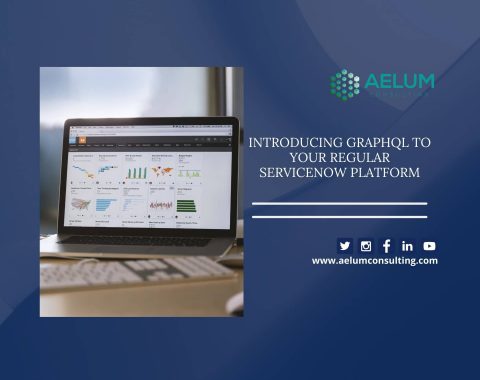Align your entire organization to deliver valuable outcomes with ServiceNow Demand Management.

DEMAND MANAGEMENT
Demand management is the process of influencing, controlling, and directing the demand for goods and services to meet an organization’s objectives. It involves forecasting demand, balancing supply & demand, and controlling demand level, timing, and composition. The primary goal of demand management is to ensure that an organization can meet customer requirements profitably. They offer to optimize sales and production, reduce costs, and improve customer satisfaction. It can be achieved through a perfect combination of pricing strategies, sales promotions, advertising, and other marketing techniques.
Demand management Features
Data collection and analysis
Gathering and analyzing data from various sources, such as sales data, customer data, market trends, and competitor data.
Demand forecasting
Predictive modeling and statistical analysis to estimate future demand for goods and services.
Sales and operations planning
Integrating sales, marketing, and operational plans to align with demand forecasts.
Inventory management
Monitoring and controlling inventory levels to ensure that products are available when needed without incurring excess costs.
Pricing and promotions management
Setting prices and offering promotions to influence demand and optimize revenue.
Customer relationship management
Building and maintaining customer relationships to understand customer needs and preferences and tailor demand management strategies accordingly.
Collaboration and communication
Encouraging collaboration and communication between different departments and stakeholders within the organization to ensure adequate demand management.
Performance measurement
Monitoring and evaluating the performance of demand management initiatives and making adjustments as needed to improve results.
ServiceNow Demand Management Process
Demand capture
Demand analysis:
Demand forecasting
Demand planning
Demand execution
Demand reporting and analytics
Demand Management Key Terms
Portfolio
A collection of demands managed as a group to achieve strategic and operational objectives. A portfolio can consist of various demands, such as new product development, IT projects, or marketing campaigns.
Assessable record
A demand record you want to evaluate for metric-type demand. You evaluate the assessable records with metric categories and metrics, which define traits and values to assess.
Metric
A trait or value used to evaluate assessable records. A metric can measure subjective values in an assessment questionnaire or gather objective values in a database query run by a script.
Metric type
It is a characteristic that defines a set of records you want to evaluate. Demand management comes with the metric type demand, which uses records from the Demand [dmn_demand] table.
Metric category
A theme for evaluating assessable records. Categories contain one or more individual metrics, which define specific traits or values that comprise the theme.
Scorecard
A visual breakdown of the performance of an assessable record based on assessment results. Use scorecards to view various data summaries for one assessable record and compare the ratings with other assessable records.
Requirement
A specific need or expectation that must be met by a demand or project. It can be defined and is typically documented in a requirements specification or statement of work.
Demand Task
A unit of work created within a demand to break down initial planning activities before converting the demand into a project. It is not a planned task like a project task.
ServiceNow Demand Management Best Practices
Define the demand management process
Clearly define the steps involved in the demand management process, including demand capture, analysis, forecasting, planning, execution, and reporting.
Use data-driven forecasting
Use historical and predictive analytics to estimate future demand and regularly review and adjust forecasts as needed.
Integrate with other systems
Integrate ServiceNow Demand Management with other systems, such as sales and marketing, operations, and customer relationship management, to provide a comprehensive view of demand.
Collaborate with stakeholders
Encourage collaboration between different departments and stakeholders within the organization. It ensures that demand management strategies are aligned with the overall goals and objectives.
Monitor performance
Regularly monitor and evaluate the performance of demand management initiatives, and make adjustments as needed to improve results.
Continuously improve
Continuously review and improve the demand management process, incorporating stakeholder feedback and utilizing best practices from other organizations.
Provide training:
Offer support and training to ensure all stakeholders understand and can effectively participate in the demand management process.
Use customizable dashboards
Get personalized dashboards and analytics tools to monitor demand management performance and make data-driven decisions.
Benefits of Demand Management
Improved forecasting accuracy
By analyzing historical data and market trends, demand management helps organizations make more accurate predictions about future demand, reducing the risk of over- or under-stocking.
Increased customer satisfaction
By managing demand effectively, organizations can ensure that they have the right products or services available at the right time, leading to improved customer satisfaction.
Improved profitability
By balancing supply and demand, demand management helps organizations avoid the costs of excess inventory, stock shortages, and lost sales.
Better resource allocation
By having a clear understanding of demand patterns, organizations can allocate resources more efficiently, such as production and distribution capacity.
Increased sales
Demand management can help organizations increase sales and revenue by identifying and targeting high-demand products and services.
Better risk management
By anticipating and responding to changes in demand, demand management can help organizations minimize the risk of lost sales and reduced profitability.
How Can Aelum Consulting Help with Demand Management?
Aelum Consulting is a Premier ServiceNow Partner in India. By leveraging our expertise and experience, organizations can effectively manage their software releases. Hence, Aelum Consulting can help organizations with their Release Management by providing a range of services and solutions, including:
Strategy and Planning
Aelum Consulting can help you define a release management strategy that aligns with your business goals and objectives. This includes planning for releases, defining release schedules, and identifying the appropriate resources required for each release.
Assessment and optimization
We can assess an organization’s current Release Management processes and recommend ways to optimize and improve them.
Process design and implementation
We can help you design and implement Release Management best practices and processes tailored to their specific needs and requirements.
Automation and integration
We can help you automate and integrate their Release Management processes with other IT systems. For example, change management and testing tools to improve efficiency and reduce errors.
Training and support
We can provide training and support to help you implement and use their Release Management processes effectively.
Monitoring and reporting
We can help you monitor and report on your Release Management processes using metrics. For example, cycle time, number of bugs, and customer satisfaction scores, to measure success and identify areas for improvement.
ServiceNow Demands Management Roles.
Demand Manager
Responsible for overseeing the demand management process & ensuring it is aligned with the organization’s overall goals & objectives.
Demand Forecaster
Responsible for predicting future demand for goods and services based on historical data and market trends.
Sales and Operations Planner
Coordinated the organization’s sales and operations plans with demand forecasts.
Inventory Manager
Responsible for monitoring and controlling inventory levels to ensure that products are available when needed without incurring excess costs.
Pricing and Promotions Manager
Responsible for setting prices and offering promotions to influence demand and optimize revenue.
Supply Chain Manager
Responsible for coordinating the various stages of the supply chain, from suppliers to customers, to ensure that demand is met effectively.
Frequently Asked Questions
Here are some common techniques used in demand management:
- Forecasting: Predictive analytics and statistical models to estimate future demand for goods and services.
- Sales and operations planning: Aligning sales, marketing, and operational plans with demand forecasts.
- Inventory management: Monitoring and controlling inventory levels to ensure that products are available when needed without incurring excess costs.
- Pricing and promotions management: Setting prices and offering promotions to influence demand and optimize revenue.
- Customer relationship management: Building and maintaining customer relationships to understand customer needs and preferences and tailor demand management strategies accordingly.
- Collaboration and communication: Encouraging collaboration and communication between different departments and stakeholders within the organization to ensure adequate demand management.
- Capacity planning: Monitoring and managing the availability of resources, such as labor and equipment, to ensure that demand can be met effectively.
- Performance measurement: Monitoring and evaluating the performance of demand management initiatives and making adjustments as needed to improve results.
- Customer segmentation: Group customers into segments based on common characteristics, such as needs, behaviors, and preferences, to tailor demand management strategies to each segment.
- Sales forecasting: Predictive analytics and statistical models to estimate future sales and align sales and marketing plans with demand forecasts.
By utilizing these techniques, organizations can effectively manage demand and optimize the supply chain, ensuring that products and services are available at a reasonable cost when and where they are needed.
Here are some examples of demand management in different industries:
- Retail: Retailers use demand management techniques to forecast demand for products, manage inventory levels, and influence customer purchasing behavior through pricing and promotions.
- Manufacturing: Manufacturers use demand management to plan and execute production schedules, manage capacity and resources, and ensure that products are available when and where they are needed.
- Healthcare: Healthcare providers use demand management to forecast demand for medical services, manage appointment schedules, and allocate resources such as staff and equipment to meet demand effectively.
- Telecommunications: Telecommunications companies use demand management to forecast demand for network capacity, plan network upgrades and expansions, and manage customer relationships.
- Energy: Energy companies use demand management to forecast electricity demand, plan power generation and distribution, and manage demand-side programs to reduce peak energy usage.
- Transportation: Transportation companies use demand management to forecast demand for transport services, plan routes, and schedules, and allocate resources such as vehicles and drivers.
- Government: Governments use demand management to forecast demand for public services, plan budgets and allocate resources, and manage public facilities and infrastructure demand.
These examples illustrate the importance of demand management in various industries and the role it plays in optimizing resources and ensuring that products and services are available when and where they are needed.
ITIL (Information Technology Infrastructure Library) is a set of best practices for IT service management. Within the ITIL framework, demand management is defined as understanding, anticipating, and influencing demand for IT services.
ITIL demand management aims to ensure that the right services are delivered at the right time and cost, aligning with the business goals and objectives. It includes activities like demand forecasting, capacity planning, and demand shaping. IT organizations use demand management to optimize the use of resources, such as hardware and software, and to ensure that IT services meet the needs of the business.
ITIL demand management is integrated with other ITIL processes, such as service portfolio management, service level management, and service design, to provide a comprehensive approach to IT service management. By following the ITIL best practices for demand management, IT organizations can ensure that their services are aligned with the needs of the business and delivered effectively.
Our Clients


























































